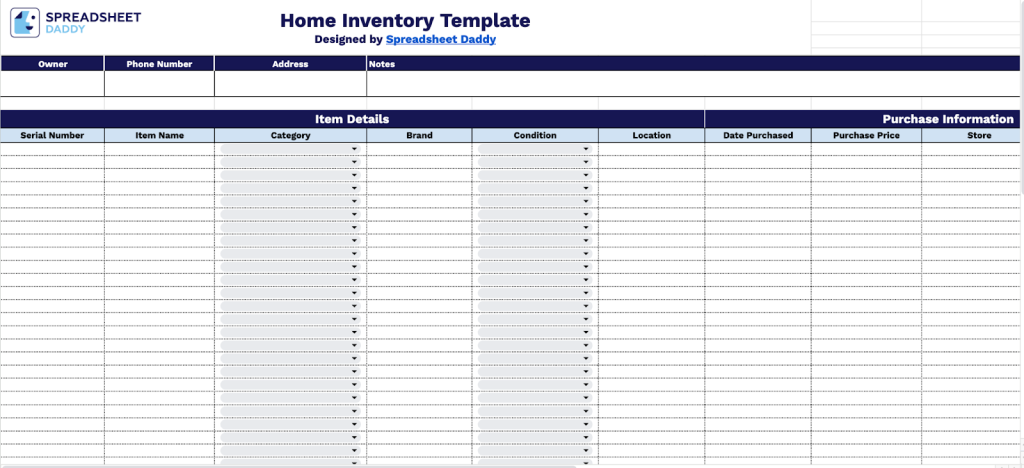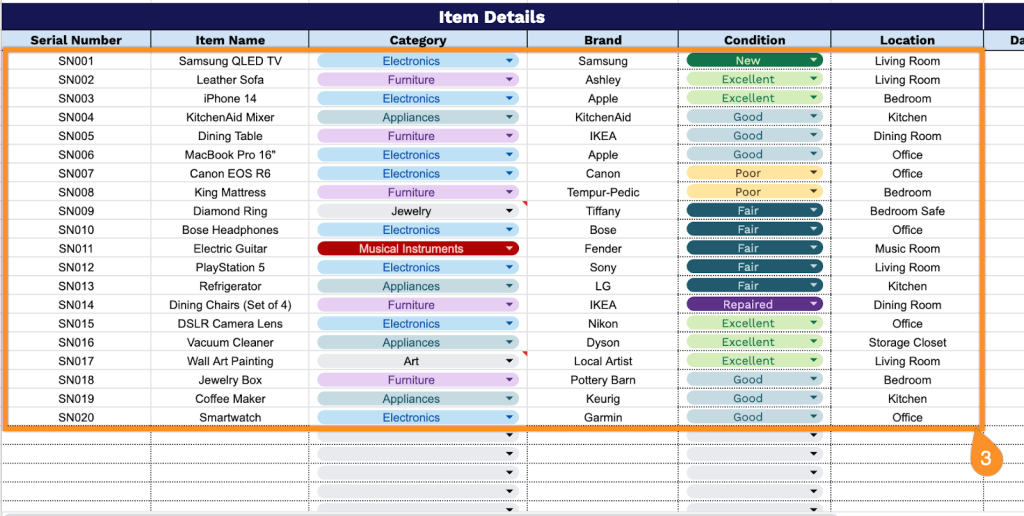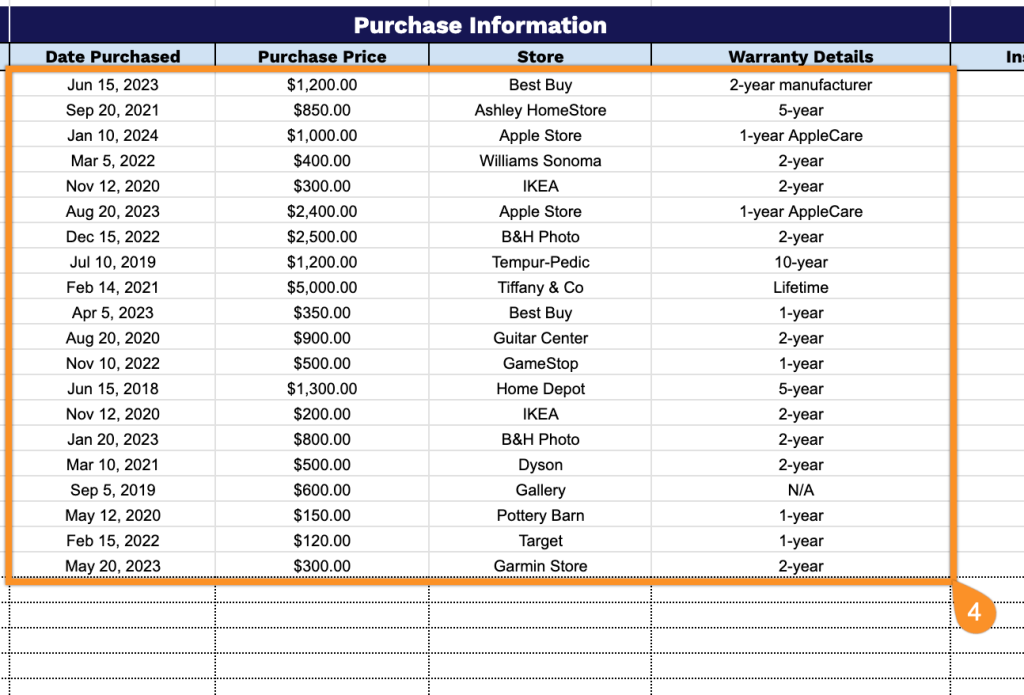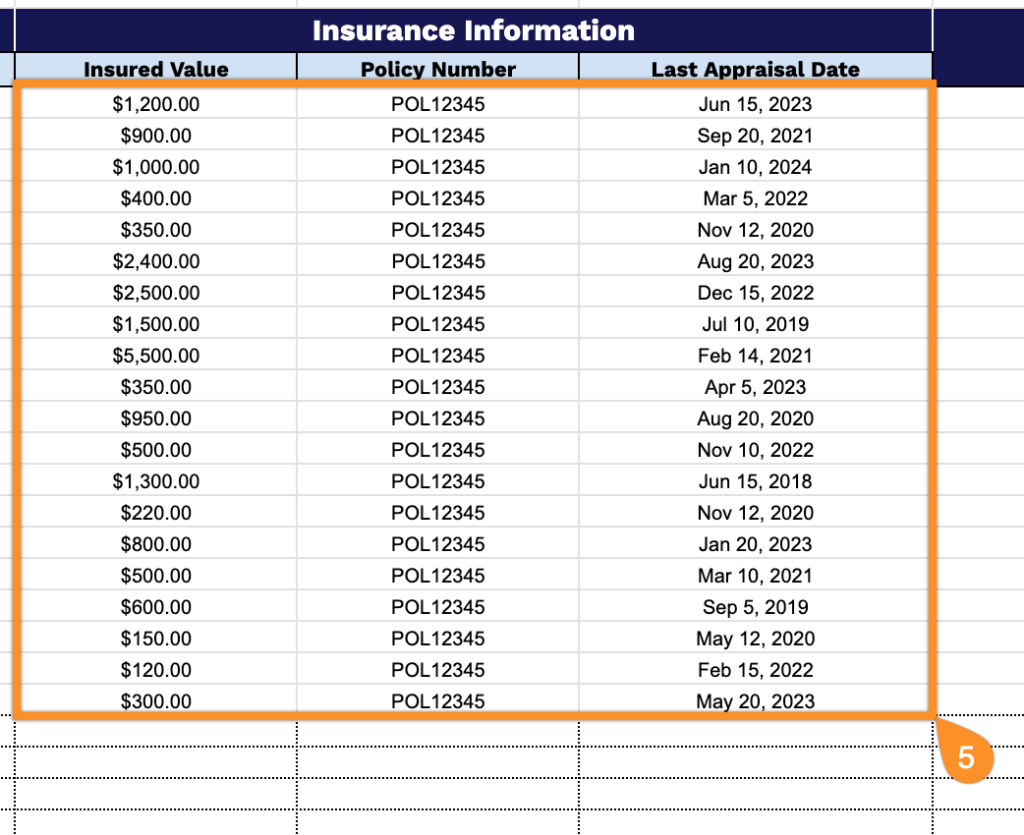Whether you’re preparing for insurance claims, planning a move, or getting organized, having a detailed home inventory can save you time, money, and stress when you need it most.
A comprehensive list of your belongings, including descriptions, values, and photos, provides crucial documentation for insurance purposes and helps you stay on top of your household assets.
Our free home inventory spreadsheet template makes this vital task straightforward. You can download it in Google Sheets, Excel, or PDF format, and the customizable template walks you through cataloging everything from furniture and electronics to jewelry and collectibles.
Download it today, and you’ll have peace of mind knowing you have a complete record of your possessions whenever you need it.
Quick Jump
ToggleWhat Is a Home Inventory Spreadsheet?

A home inventory spreadsheet is a document that tracks all of your personal possessions along with key details such as purchase price, date acquired, and serial numbers.
Maintaining this type of inventory also helps homeowners assess whether their current insurance coverage adequately protects their belongings.
Download Spreadsheet Daddy’s Free Home Inventory Management Spreadsheet

Our home inventory template is a comprehensive organizational tool designed to help homeowners catalog their possessions for insurance and record-keeping purposes.
The template provides a systematic way to document valuable belongings. It can be easily customized by adding or removing columns to fit your specific needs, making it easier to file insurance claims or track personal assets in case of theft, damage, or loss.
What’s included
- Complete home inventory tracking setup: The template provides a clean and organized way to record all your valuable possessions, with owner contact information at the top and a comprehensive tracking table below. Each item receives its own unique serial number, name, category, brand, condition status, and location, allowing you to catalog everything in your home systematically.
- Detailed purchase history documentation: Every item entry includes dedicated fields for purchase date, original price, store of purchase, and warranty information, providing complete visibility into when and where each possession was acquired for improved financial tracking and warranty management.
- Insurance coordination framework: The template features specific columns for insured values, policy numbers, and last appraisal dates, making it straightforward to align your inventory with insurance coverage and ensure you have proper documentation for potential claims.
- Professional organization system: Designed with clear column headers and logical flow, the template provides an intuitive structure that’s easy to fill out and maintain, whether you’re preparing for a move, filing insurance claims, or simply organizing your household assets.
- Flexible notes and categorization: Additional notes fields and category classifications allow you to customize the inventory to your specific needs, whether tracking electronics, furniture, jewelry, or any other valuable items throughout your home.
How to Use Our Home Inventory Spreadsheet Template
1. Get your template ready by duplicating the Google Sheets version or exporting to Excel/PDF format.
2. Provide the owner’s complete name, phone number, and residence location. Use Notes to document any relevant additional details.

3. Complete the Item Details section by entering all essential identification and classification information:
- Serial Number: Enter the unique manufacturer identifier found on the item for warranty and insurance purposes.
- Item Name: Provide a specific, descriptive name that clearly identifies the individual possession.
- Category: Select the appropriate classification group (electronics, furniture, jewelry, appliances, etc.).
- Brand: Record the manufacturer or brand name of the item for accurate identification.
- Condition: Document the current state of the item (new, excellent, good, fair, or poor condition).
- Location: Specify where the item is currently stored or positioned within your home.

4. Fill in the Purchase Information section by documenting all acquisition and financial details:
- Date Purchased: Record when you originally bought or acquired this item.
- Purchase Price: Enter the amount you paid for the item at the time of purchase.
- Store: Include the name of the retailer, vendor, or location where you bought the item.
- Warranty Details: Document any warranty coverage, including duration, type, and expiration date.

5. Document coverage specifics in the Insurance Information section for comprehensive protection tracking:
- Insured Value: Enter the current replacement value or insured amount for this item.
- Policy Number: Record the insurance policy number that covers this specific possession.
- Last Appraisal Date: Include when the item was most recently professionally evaluated for insurance purposes.

6. Record any extra significant information in the Notes space.
